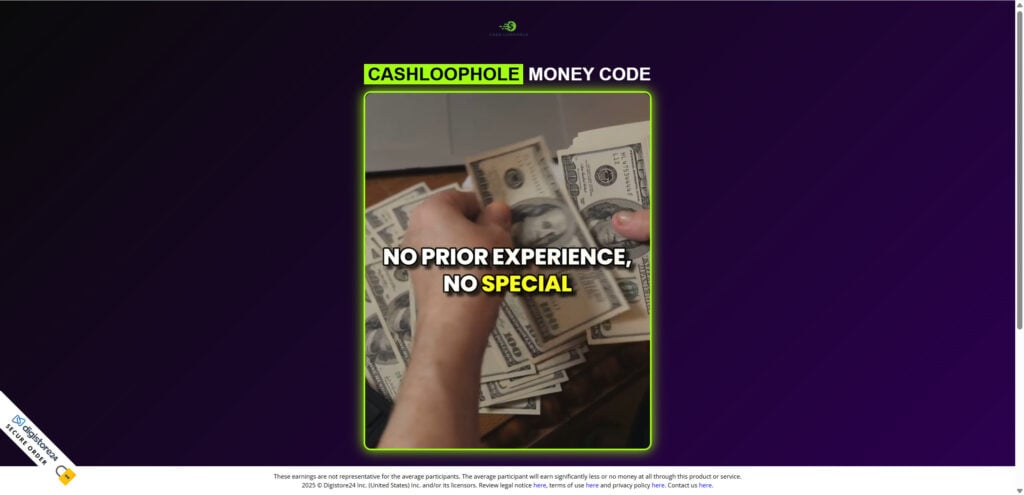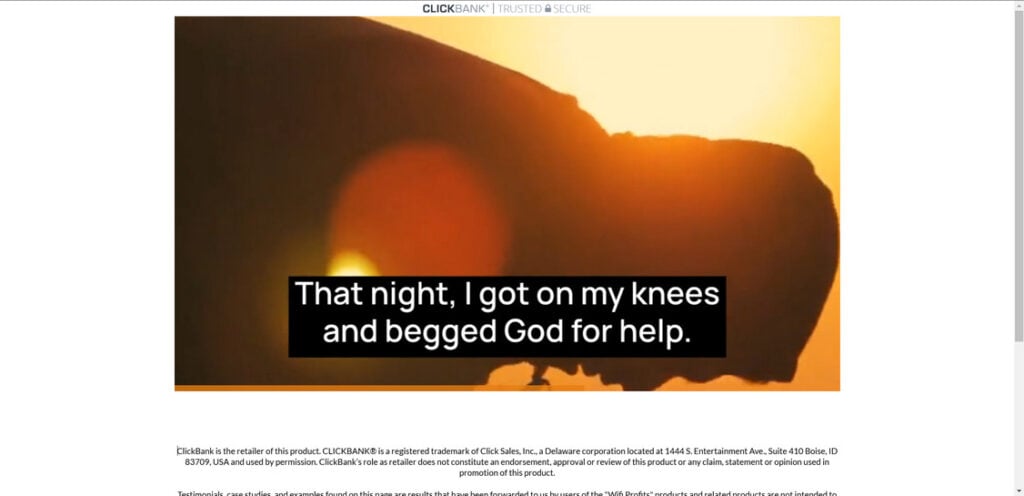If you’ve been online recently, chances are you’ve seen flashy ads or viral clips promising fast money with a so-called “7-Minute Phone Trick.” These scams use buzzwords like “Cash Phone,” “Cash Loophole,” “Pocket Sized ATM Machine,”, “Dumb Money”, “The Automatic Cash Machine,” and “WiFi Profits App” to draw attention. The premise sounds too good to ignore: tap your phone for seven minutes a day, do no actual work, and magically start earning hundreds—or even thousands—of dollars.
But behind the high-gloss sales pitch lies an elaborate con. This article unpacks the truth about the 7-Minute Phone Trick scam, breaking down how it operates, why it works on so many people, and what you can do if you’ve been caught in its web. Let’s dive deep into this evolving digital scam and understand how to avoid becoming its next victim.

Scam Overview: What Is the 7-Minute Phone Trick Scam?
The 7-Minute Phone Trick scam refers to a group of rebranded digital frauds that present a nearly identical pitch: effortless, quick money with zero skills required. They simply repackage the scam under different names and domains to keep evading detection and criticism. Names like “Cash Phone,” “Cash Loophole,” and “WiFi Profits App” all follow the same deceptive pattern.

How It’s Promoted
These scams are plastered across popular platforms like Facebook, Instagram, TikTok, and YouTube. The ads are polished and strategically designed to look like they’re from legitimate influencers or financial gurus. Some even use deepfake or AI-generated avatars to mimic popular personalities.
These scam artists exploit emotionally resonant narratives—single parents paying off mortgages, gig workers quitting their jobs, or retirees affording luxuries—to build a compelling backstory. By doing so, they attract a wide audience and lower skepticism.
Common Promises and Manipulations
- Earn $500 to $1,400 per day from your phone
- No need to sell, market, or build anything
- Setup in just minutes with ongoing passive income
- Automated system that runs in the background
- Secret strategy big tech doesn’t want you to know about
- Spots are limited and filling fast
These claims appeal to anyone struggling financially or looking for a shortcut to success. The result? Thousands fall for it daily.
Red Flags You Shouldn’t Ignore
- The system’s details are always vague or missing entirely
- Fake social proof using stock photos and recycled testimonials
- Pushy countdowns and “limited availability” notices
- Zero contact info, legal terms, or real company verification
- Hidden recurring charges after the initial payment
What They Really Want
The masterminds behind these scams are after three things: your money, your personal data, and your trust. Once they have access to your wallet and inbox, they bombard you with upsells and cross-promotions for even more shady products.
How the Scam Works
Step 1: The Viral Advertisement
You’re targeted by a sleek, emotionally charged ad promising fast, easy money. It may show a DoorDash driver quitting their job or a single mother suddenly able to buy groceries and pay rent—all thanks to this miraculous “phone trick.”

Step 2: Clickbait Landing Page
Clicking the ad takes you to a professional-looking website. A video autoplays, featuring dramatic music, slick graphics, and a narrator sharing their rags-to-riches story. But here’s the catch—they never explain how the system actually works.

Step 3: The Psychological Setup
The video keeps repeating the same points: “Act now,” “Only 3 spots left,” and “Don’t miss this once-in-a-lifetime opportunity.” It’s pure manipulation, aimed at your emotions, not your logic.
Step 4: Data Collection
You’re asked to enter your full name, phone number, and email to gain access. This info is often shared with marketing affiliates or used to build a list for future scam campaigns. Once they have your contact details, expect a flood of promotional messages.
Step 5: The “One-Time” Payment
You’re told that for just $47–$67, you can unlock the full system. This payment is presented as a tiny price to pay for financial freedom. But it’s only the beginning.
Step 6: Recurring Charges and Upsells
After paying, you’re pressured into purchasing add-ons:
- Advanced versions for $197 or more
- Coaching sessions or mentorship programs
- Subscriptions for AI tools, traffic hacks, or exclusive access
Some users report being charged multiple times without their consent.
Step 7: Low-Value or Useless Content
Once inside, you’re greeted by a basic member’s area. It often includes recycled YouTube videos, outdated PDFs, or generic affiliate marketing content. Nothing in the system matches the promises made in the ad.
Step 8: The Vanishing Act
In a few weeks or months, the website disappears. The scammers move their operation to a new domain name and start the cycle over. They may even use the same content with a new brand identity.
How Scammers Rebrand and How to Spot Future Scams
The people behind the 7-Minute Phone Trick scam are constantly adapting. Once a scam gains attention or starts receiving negative reviews, they quickly rebrand it under a new name and website. Cash Phone becomes Cash Loophole. WiFi Profits App becomes Pocket ATM. This tactic helps them stay one step ahead of watchdogs and scam reports.
Common Signs of Future Scams
- Over-the-top promises of daily income from little or no work
- High-pressure sales tactics using fake urgency or countdowns
- No clear explanation of how the system works
- Vague or generic terms like “secret system” or “WiFi trick”
- Upfront payment required before disclosing any real details
- Testimonials using stock photos or no verifiable information
How to Protect Yourself
- Always research the product name followed by “scam” or “reviews”
- Look for real company information including terms, refund policy, and contact details
- Be skeptical of emotional stories that lead directly to a buy button
- Never pay for vague systems that refuse to explain what they are
Scammers depend on confusion and curiosity. The best protection is clarity and caution.
What to Do If You’ve Been Scammed
1. Cancel and Block Any Future Payments
Log into your bank or PayPal account and cancel subscriptions or charges. Use transaction filters to find related charges.
2. File for a Chargeback
Contact your credit card provider to dispute the charge. Be honest—state that the product was misrepresented or never delivered.
3. Report the Scam to Authorities
- Federal Trade Commission (FTC): reportfraud.ftc.gov
- Internet Crime Complaint Center (IC3): ic3.gov
- Better Business Bureau (BBB): bbb.org
Include screenshots, receipts, and descriptions of the incident.
4. Safeguard Your Digital Identity
Change all passwords used during the transaction. Enable two-factor authentication where possible. Monitor your credit report for any anomalies.
5. Spread Awareness
Help others by posting reviews or warnings on forums like Reddit, Quora, and Trustpilot. Use hashtags or scam forums to reach the right audience.
Frequently Asked Questions About the 7-Minute Phone Trick Scam
What is the 7-Minute Phone Trick scam?
The 7-Minute Phone Trick scam is a deceptive online scheme disguised as an effortless way to make money using your phone. It goes by various names like “Cash Phone,” “Cash Loophole,” “Pocket Sized ATM Machine,” and “WiFi Profits App.” The scam promises big payouts for minimal effort but delivers low-value content after collecting money and personal data.
Are the names Cash Loophole, Automatic Cash Machine, and WiFi Profits all part of the same scam?
Yes. These are all rebranded versions of the same scam structure. They reuse the same videos, testimonials, and sales tactics under different names to avoid detection and continue scamming people.
How much does it cost to join the scam system?
The initial payment is usually between $47 and $67. However, many users report additional upsells, hidden fees, or unauthorized charges after the first transaction.
What do you actually get after paying?
Victims typically gain access to a generic member’s dashboard filled with outdated PDFs, publicly available YouTube videos, and vague affiliate marketing guides. There is no actual “system” that does what was promised.
Can I get a refund if I’ve paid?
You may be able to request a chargeback through your credit card provider or PayPal by reporting the charge as fraudulent or misleading. Prompt action increases the chance of a successful refund.
Why are there fake countdowns and “spots left” notices?
These are psychological tricks to create urgency and push people to buy without thinking critically. The numbers are fake and reset with every visitor.
Are the testimonials and success stories real?
No. Most are fabricated or created using stock images, AI-generated avatars, or paid actors. They are part of the illusion designed to build trust and reduce skepticism.
Why do these scams keep coming back under new names?
Scammers recycle their websites, change domains, and alter branding to stay ahead of law enforcement and consumer complaints. The basic scam stays the same, but the wrapper keeps changing.
Is there any real “phone trick” to make money online?
No. There is no magical shortcut to wealth through a phone app or trick. Legitimate online income requires work, strategy, and time—through freelancing, content creation, ecommerce, or similar ventures.
What should I do if I shared my personal information?
If you gave out your name, email, or phone number, expect scam emails and calls. If financial details were shared, monitor your bank activity and change your passwords. Use two-factor authentication and consider a credit monitoring service.
The Bottom Line
The 7-Minute Phone Trick isn’t a trick—it’s a trap. It preys on desperation, hope, and ignorance. Whether you encountered it as the “Cash Phone,” “Pocket ATM,” or “WiFi Profits App,” the result is the same: you lose money, time, and trust.
Genuine success online requires real effort, transparency, and skill. These scams thrive because people want easy wins. Don’t fall for the illusion. If someone refuses to explain how something works until you pay—walk away.
Be cautious. Protect your finances. And above all, question anything that seems too good to be true. Because it probably is.










